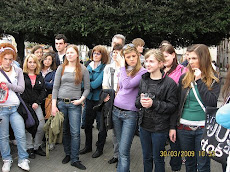
The Pastiera, even if in a rudemental form, was used during the pagan celebrations of the return of the Spring time. During these celebrations Cerere’s priestess brought an egg, symbol of new life in procession. Because of the wheat or the einkorn, mixed to the soft ricotta cheese, it could come from the einkorn bread called "confarratio" a typical recipe during the ancient Roman weddings called "confarratio". Another hypothesis we may consider is that it comes from ritual bread used, which spread during the period of Costantino the Great. They were made of honey and milk the people offerd the catechumen during Easter Eve at the end of the ceremony of baptism.
The modern pastiera, was probably invented in a peaceful and secret Neapolitan convent. An unknown nun wanted that cake, symbol of the Resurection, to have the perfume of the flowers of the orange trees which grew in the convent’s gardens. She mixed a handful of wheat to the white ricotta cheese, then she added some eggs, symbol of the new life, some water which had the fragrance of the flowers of the spring time, cider and aromatic Asian spices.
We know for certain that the nuns of the ancient convent of San Gregorio Armeno were considered t o be genius in the complex preparation of the Pastiera. They used to prepare a great quantity for the rich families during Easter time.
o be genius in the complex preparation of the Pastiera. They used to prepare a great quantity for the rich families during Easter time.
Every good Neapolitan housewife considers herself to be the one and only to have either the authentic or the best recipe of the Pastiera. There are two different ways of preparing the Pastiera: the oldest one mixes the ricotta cheese to the eggs; the most recent and innovative one, reccomends to mix thick pastry cream which makes the Pastiera softer. This innovation was introduced by Starace, a Neapolitan confectioner who had a shop in a corner in Municipio Square.
The Pastiera has to be cooked with some days advance, no day later than Maudy Thursday or Maudy Friday, in order to allow the fragrances to mix properly to have as a result that unique taste. The Pastiera is not only cooked but also sold and served in appropriate pans called "ruoti" because it’s very fragile, so it would easily crumble up if removed from the "ruoto".
The modern pastiera, was probably invented in a peaceful and secret Neapolitan convent. An unknown nun wanted that cake, symbol of the Resurection, to have the perfume of the flowers of the orange trees which grew in the convent’s gardens. She mixed a handful of wheat to the white ricotta cheese, then she added some eggs, symbol of the new life, some water which had the fragrance of the flowers of the spring time, cider and aromatic Asian spices.
We know for certain that the nuns of the ancient convent of San Gregorio Armeno were considered t
 o be genius in the complex preparation of the Pastiera. They used to prepare a great quantity for the rich families during Easter time.
o be genius in the complex preparation of the Pastiera. They used to prepare a great quantity for the rich families during Easter time.Every good Neapolitan housewife considers herself to be the one and only to have either the authentic or the best recipe of the Pastiera. There are two different ways of preparing the Pastiera: the oldest one mixes the ricotta cheese to the eggs; the most recent and innovative one, reccomends to mix thick pastry cream which makes the Pastiera softer. This innovation was introduced by Starace, a Neapolitan confectioner who had a shop in a corner in Municipio Square.
The Pastiera has to be cooked with some days advance, no day later than Maudy Thursday or Maudy Friday, in order to allow the fragrances to mix properly to have as a result that unique taste. The Pastiera is not only cooked but also sold and served in appropriate pans called "ruoti" because it’s very fragile, so it would easily crumble up if removed from the "ruoto".









Nessun commento:
Posta un commento